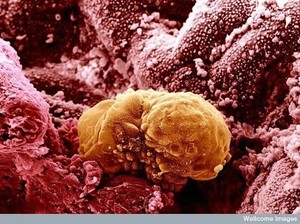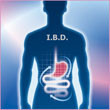Erythropoiesis-stimulating agents (ESAs) are biological analogues of human erythropoietin used for the treatment of anaemia associated with chronic kidney disease (CKD) and chemotherapy treatment in cancer patients [1]. ESA biosimilars have been available on the Italian market since 2007. However, only limited post-marketing data exist on the comparative effectiveness of biosimilar and originator ESAs in routine care.
Effectiveness of ESAs in treating anaemia in kidney disease and cancer patients
Biosimilars/Research
|
Posted 10/06/2016
 0
Post your comment
0
Post your comment

To give further reassurance about the comparability of effectiveness between biosimilar and originator ESAs, the observational, population-based study [2] aimed to evaluate and compare the effects of biosimilar, reference product and other ESAs still covered by patent on haemoglobinemia in CKD and cancer patients in a Local Health Unit (LHU) in Northern Italy during 2009‒2014.
The results of the study showed that, overall, 1,003 ESA users (reference product: 252, 25.1%; other ESAs covered by patent: 303, 30.2%; biosimilars: 448, 44.7%) with CKD or cancer were eligible for the study. The study reported no statistically significant difference in the amount of dose dispensed during the follow-up among biosimilars, reference product and other ESAs covered by patent was found in either CKD or cancer patients.
Three months from treatment start, all ESAs increased haemoglobin (Hb) values on average by 2 g/dL. The study claimed no differences in ΔHb (i.e. difference of Hb values between baseline and three months after treatment start) as well as in frequency of non-responders (ΔHb≤0 g/dL), responders (0<ΔHb≤2 g/dL) and high responders (ΔHb>2 g/dL) among different types of ESAs were observed in both indications. Overall, around 15‒20% of ESA users were, however, non-responders. The strength of treatment, defined as the total number of defined daily dose (DDD) dispensed during the follow-up, divided by days of follow-up, but not by type of dispensed ESAs was found to be a predictor of responsiveness to treatment.
The authors concluded that no difference in the effects on haemoglobinemia after the first three months of treatment among users of either ESA biosimilars, originators or those still covered by patent, when using a comparable dose, was observed in a general population from Northern Italy. These results suggest that the lowest cost ESA should be prescribed in CKD/cancer patients, irrespective of ESA type.
Conflict of interest
The authors of the research paper [2] reported they have no conflicts of interest to declare. They added that the study was conducted in the context of the ‘Assessment of short- and long-term risk-benefit profile of biologic[al]s through healthcare database network in Italy’ project, which was funded by the Italian Ministry of Health.
Abstracted by Gianluca Trifirò, Department of Biomedical and Dental Sciences and Morphofunctional Imaging, University of Messina, Italy; Department of Medical Informatics, Erasmus Medical Center, Rotterdam, The Netherlands.
Editor’s comment
Readers interested to learn more about biosimilars are invited to visit www.gabi-journal.net to view the following manuscript published in GaBI Journal:
Top developments in biosimilars during 2015
Readers interested in contributing a research or perspective paper to GaBI Journal – an independent, peer reviewed academic journal platform – please send us your submission here.
Related article
Switching between different ESAs
References
1. Aapro MS, Link H. September 2007 update on EORTC guidelines and anemia management with erythropoiesis-stimulating agents. Oncologist. 2008;13:33-6. doi:10.1634/theoncologist.13-S3-33 PMID: 18458123
2. Ingrasciotta Y, Giorgianni F, Marcianò I, Bolcato J, Pirolo R, Chinellato A, et al. Comparative effectiveness of biosimilar, reference product and other erythropoiesis-stimulating agents (ESAs) still covered by patent in chronic kidney disease and cancer patients: an Italian population-based study. PLoS One. 2016;11(5):e0155805. doi: 10.1371/journal.pone.0155805. eCollection 2016.
Permission granted to reproduce for personal and non-commercial use only. All other reproduction, copy or reprinting of all or part of any ‘Content’ found on this website is strictly prohibited without the prior consent of the publisher. Contact the publisher to obtain permission before redistributing.
Copyright – Unless otherwise stated all contents of this website are © 2016 Pro Pharma Communications International. All Rights Reserved.
News
First denosumab biosimilars approved in Canada and the US
Dr Reddy's launches bevacizumab biosimilar Versavo in the UK
General
Brazil advances in follow-on biologicals/biosimilars approvals, trailing Europe
Insurer perspective on increasing biosimilar uptake in Canada
Most viewed articles
The best selling biotechnology drugs of 2008: the next biosimilars targets
Global biosimilars guideline development – EGA’s perspective
Related content
Comparing biosimilar adoption: Medicare Advantage versus traditional Medicare
Questioning the need for ethnic sensitivity assessments for biosimilar monoclonal antibodies
ANVISA's role in biosimilar medicine regulation and innovation promotion
Infliximab discontinuation in patients with originator retransition vs biosimilar continuation
Comparing biosimilar adoption: Medicare Advantage versus traditional Medicare

Biosimilars/Research Posted 03/04/2024
Questioning the need for ethnic sensitivity assessments for biosimilar monoclonal antibodies

Biosimilars/Research Posted 27/03/2024
ANVISA's role in biosimilar medicine regulation and innovation promotion

Biosimilars/Research Posted 22/03/2024
Infliximab discontinuation in patients with originator retransition vs biosimilar continuation

Biosimilars/Research Posted 07/03/2024
The best selling biotechnology drugs of 2008: the next biosimilars targets






Post your comment